Alaska Hunting Guide
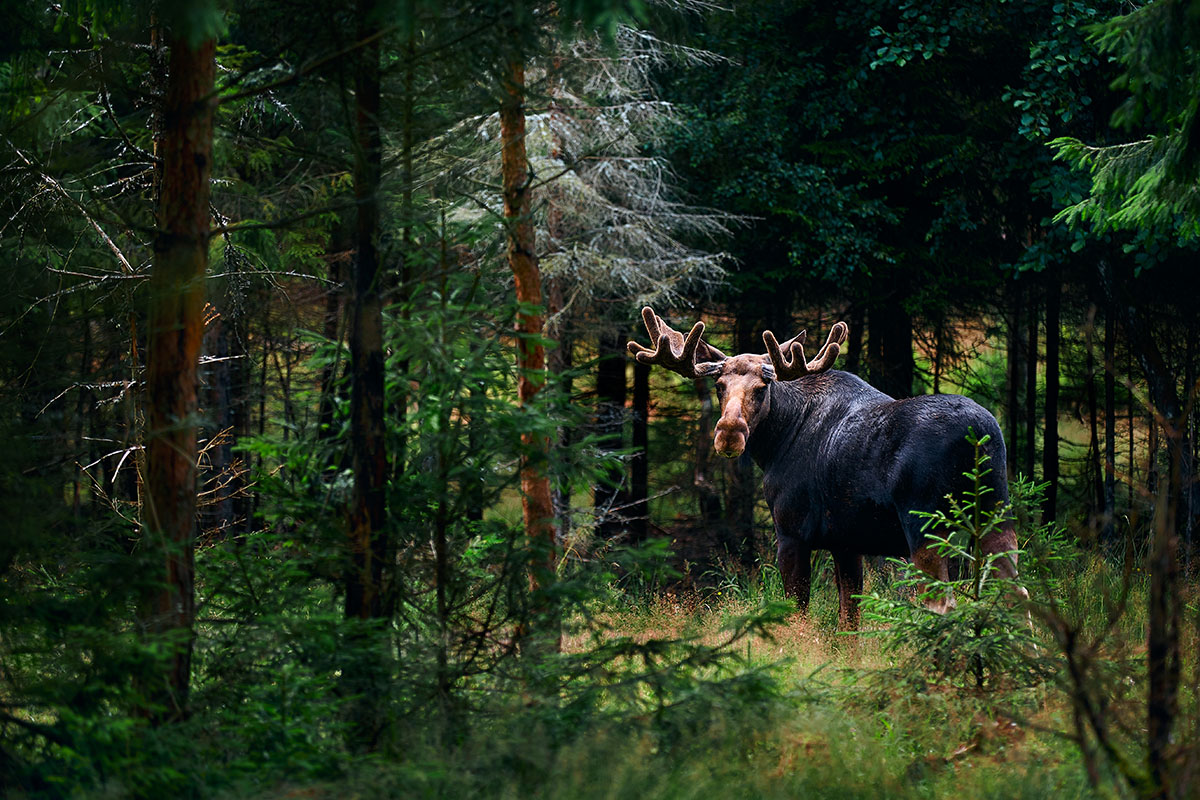
Alaska’s wilderness offers unique game opportunities. The vast landscape supports healthy populations of many large species. Because of Alaska’s large land area, many hunters choose longer trips. Given the uncertainty of Alaskan weather and animal migration, longer trips offer a higher potential for success.
What to Hunt
The Alaskan wilderness supports over a dozen game species, large and small.
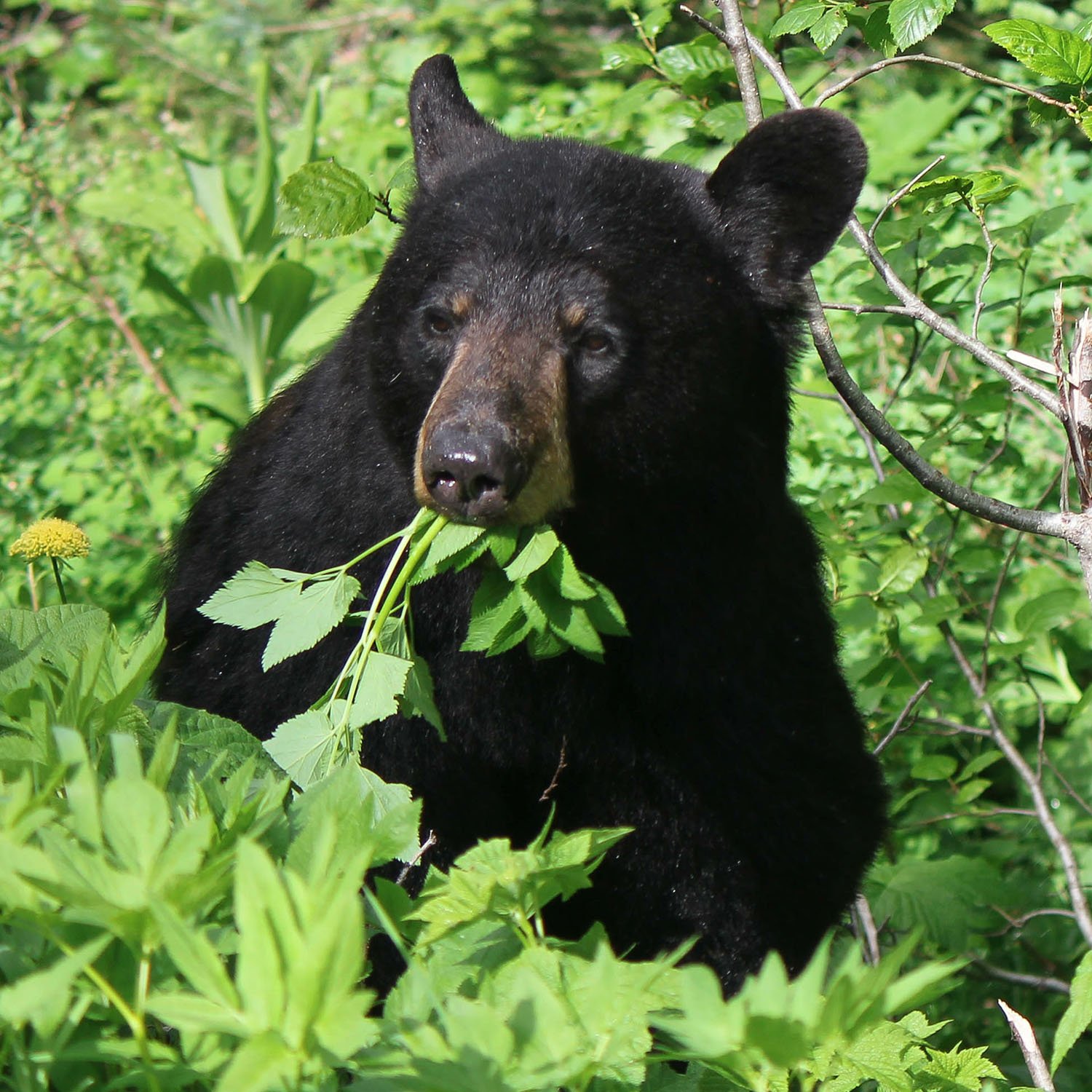
Black Bear
Black bear can be found in the most heavily forested areas of Alaska, and are most dense in the Southeast region. Alaska is home to approximately 100,000 black bears, and annual harvests have increased over recent years. There are some peninsulas and islands where black bear cannot be found. They can be found on most islands in Southeast Alaska, and both black and brown bears can be found on the southeastern mainland.
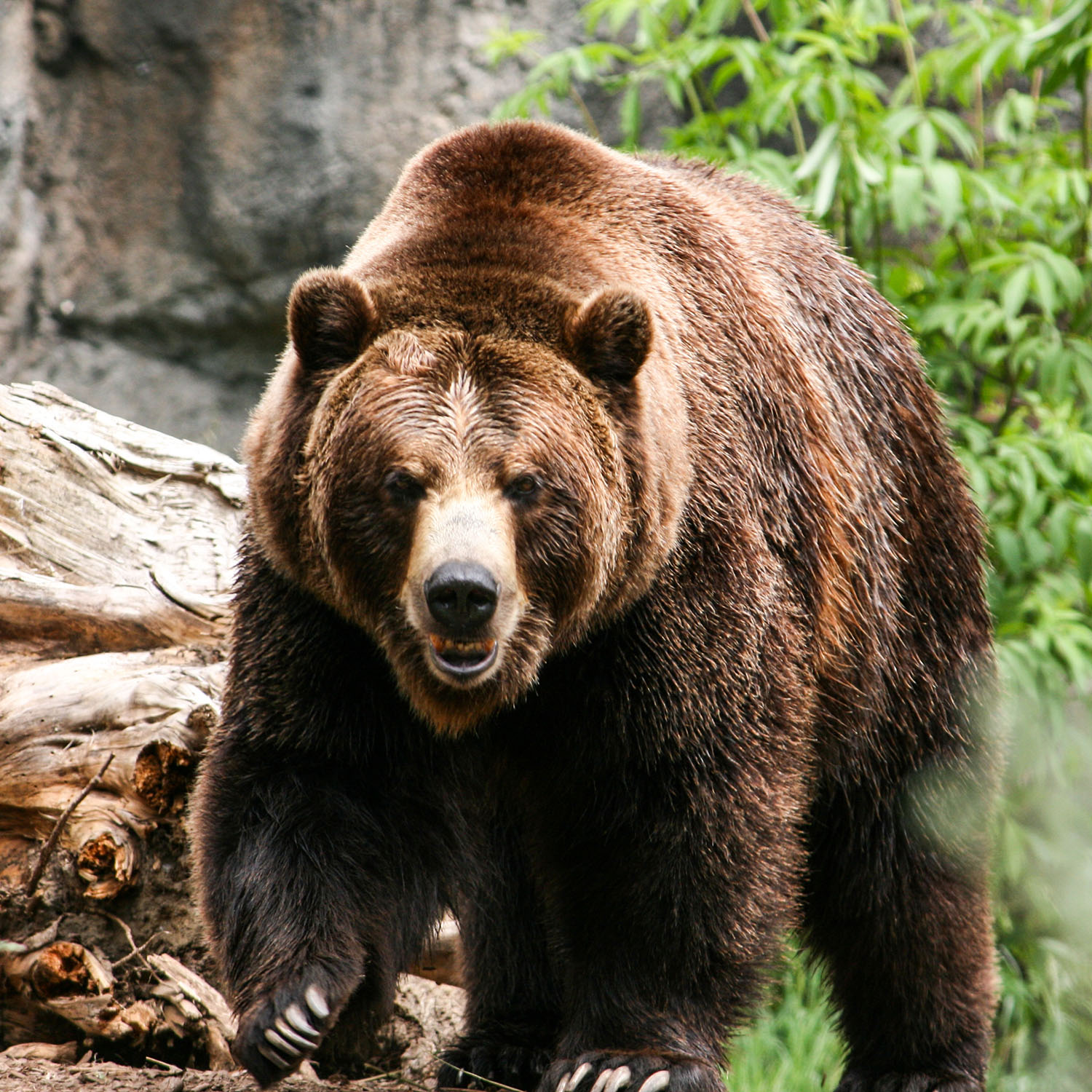
Grizzly and Brown Bear
Grizzly bears can be found statewide, though notable population density occurs inland. Brown bears are distributed along the state’s coastline. The highest population densities of brown and grizzly bears are found on Kodiak Island, Admiralty Island, and throughout the Alaskan Peninsula.
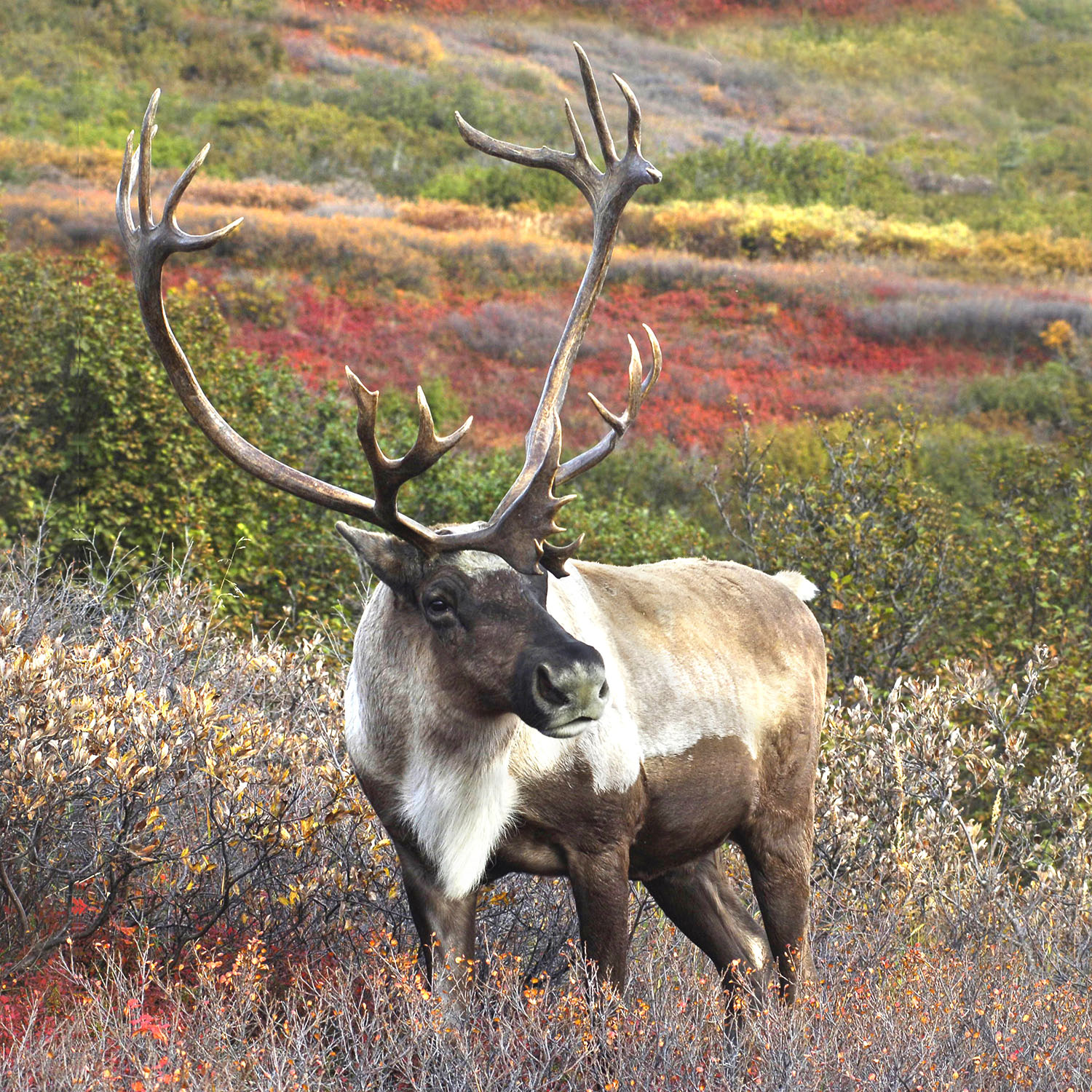
Caribou
Caribou can be found all throughout the state, except in the Southeast. Caribou travel in herds that can range from a few hundred animals to hundreds of thousands. There are 32 herds of caribou in Alaska, with an estimated 950,000 caribou total. Herds can often be found in treeless tundra and mountains, but winter in the boreal forest. Each herd has a unique calving area.
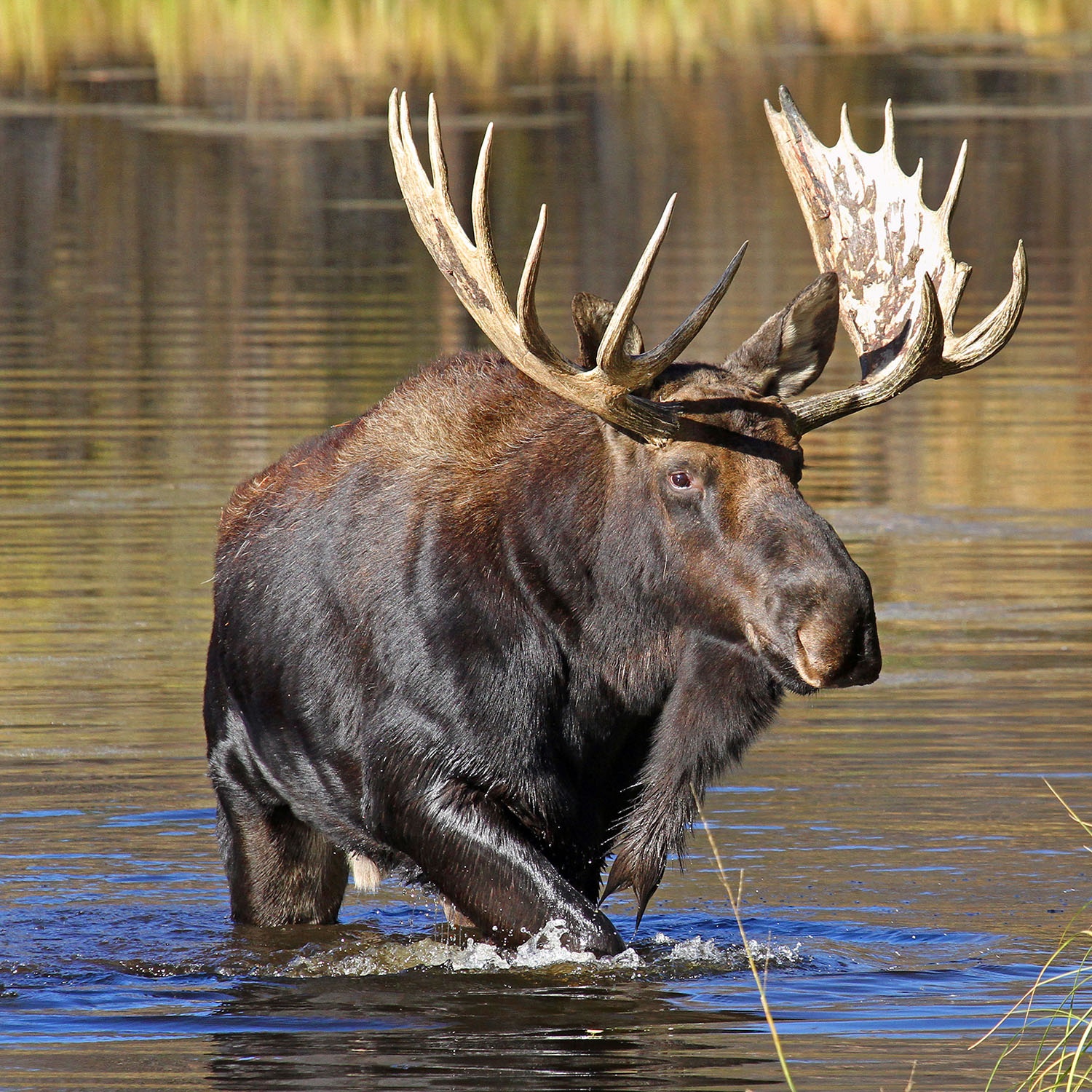
Moose
Moose are very widely distributed throughout Alaska. The greatest populations can be found in South-Central Alaska. Notable hunting populations also exist in the Interior, Western, and Arctic Alaska. The largest trophy bulls come from Western Alaska, though they can be found throughout the state. Moose are most abundant in recently burned areas with willow and birch shrubs. They can also be found on timberline plateaus, and along the Southcentral and Interior Alaska rivers.
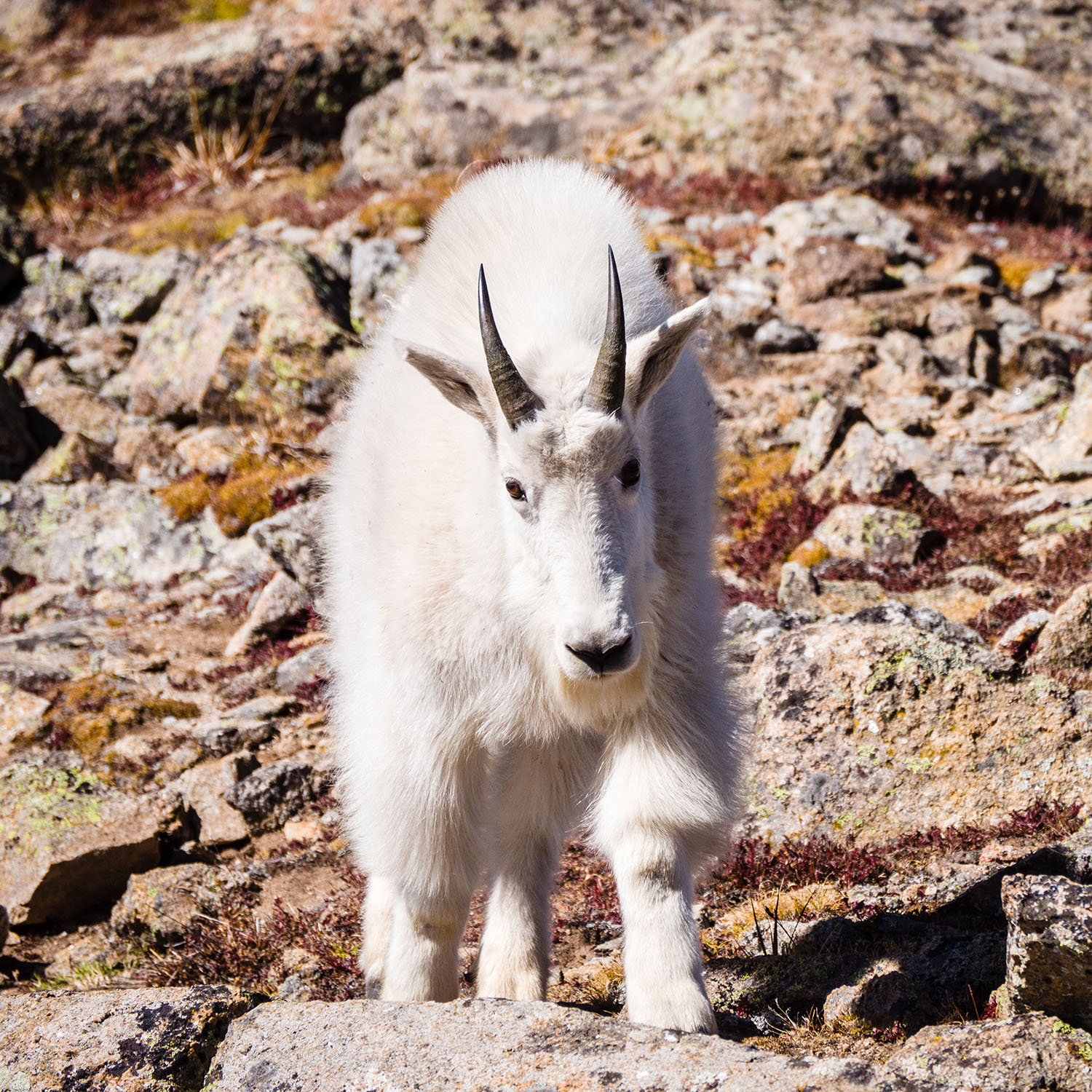
Mountain Goat
Mountain goats are commonly found on steep mountain ranges. They are particularly prominent along the coastal mounts to Cook Inlet in Southeast Alaska; in the Chugach, Talkeetna, and Wrangell Mountains in Southcentral Alaska; and on Kodiak, Revillagigedo, and Baranof Islands. Goats typically spend their summers in high alpine meadows, and migrate to ranges at or below the tree lines for the winter. Hunters are encouraged to target billies, but it is legal to shoot nannies.
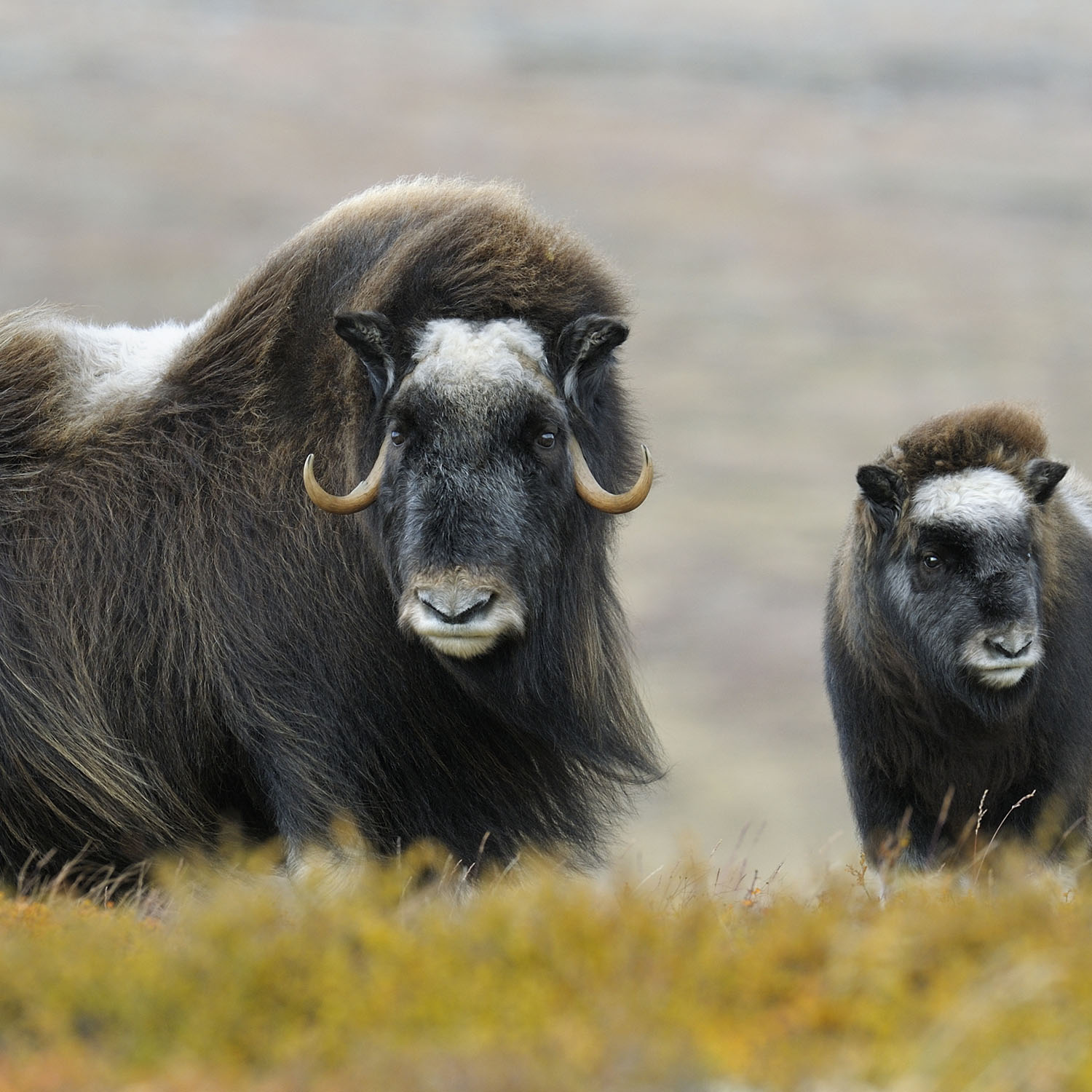
Muskox
Alaska’s muskox populations are usually found on the western and arctic coasts of Alaska.
Other Alaska game species include: Deer, Sheep, Wolf, Wolverine, Beaver, Coyote, Arctic Fox, Red Fox, Lynx, Squirrel, Grouse, Ptarmigan, Hare, Shrew, Mouse, Porcupine, Cormorant, Crow, Pika, Snowy Owl, Chukar, Partridge, Pheasant, Quail, and Wild Turkey, Belgian Hare, English Sparrow, Eurasian Collared Dove, Muridae Rodent (gerbil, rat, true mice and their relatives), Raccoon, Rockdove (pigeon), and Starling, Feral Ferret, Feral Swine, etc. found in the "Hunting Seasons" section at bottom of the page
Where to Hunt
The US Bureau of Land Management and the Alaska Department of Natural Resources both maintain general land status information. Access and use of state land and water is protected under state constitution.
State Park Lands
Parts of Alaskan State Park Lands are open to hunting. However, laws about discharge and use of firearms vary by park.
State Refuge Lands
Most state refuge lands are open to hunting. There may be some local regulations or registration requirements, depending on the area.
Federal Public Lands
Most federal public lands are open to hunting under Alaskan state law. National Parks and National Park Monuments are closed to hunting.
Private Lands
State hunting regulations apply to private land. However, they do not guarantee open access. If you intend to hunt on private land in Alaska, be sure that you have permission from the owner or proprietor.
Military Lands
Civilians are permitted to hunt in some areas of military land in Alaska, but hunters must obtain a Recreation Access. An access fee may also be charged.
Licensing Fees
Any prospective hunter over the age of 17 is required to obtain a hunting license.
| License | Fee |
|---|---|
| Resident Annual Sport Fishing and Hunting License | $60.00 |
| Resident Annual Sport Fishing, Hunting, and Trapping License | $85.00 |
| Resident Annual Hunting | $45.00 |
| Resident Annual Trapping | $25.00 |
| Resident Annual Low Income Sport Fishing, Hunting, and Trapping License | $5.00 |
| Resident Hunting License for the Blind | $0.50 |
| Resident Duplicate (replacement) License | $45.00 |
| Nonresident Annual Hunting | $160.00 |
| Nonresident Annual Hunting and Trapping | $405.00 |
| Nonresident Annual Hunting and 3 Day Sport Fishing License | $175.00 |
| Nonresident Annual Hunting and 7 Day Sport Fishing License | $190.00 |
| Nonresident Annual Hunting and 14 Day Sport Fishing License | $205.00 |
| Nonresident Annual Military Hunting | $235.00 |
Hunter Education & Youth Hunting
The successful completion of a hunter education course is required for all hunters over the age of 18. This may vary based on the zone in which you are hunting.
Alaska has several designated youth hunting areas. If you are under 18, you must have either:
- Completed a hunter education course OR
- Hunt under the immediate supervision of a licensed hunter over the age of 18.
Hunter education courses are also required for all youths participating in youth hunt days.
Alaska hunter education courses are available in person, or as a combination of online learning and field hunting.
There are several youth only hunts offered throughout the year.
Trapping
The following animals are designated as “furbearers” and may be taken ONLY with a trapping license: beaver, coyote, Arctic fox, red fox, fisher, lynx, marmot (Alaska or hoary marmot and woodchucks), marten, mink, muskrat, river otter, squirrel, weasel, wolf, and wolverine. You may sell any part of these animals with a trapping license. Other fur-bearing animals may be taken with a hunting license.
If you trap a coyote, fisher, fox, lynx, marten, mink, river otter, weasel, wolf, or wolverine, you are required to salvage its hide. If you take a beaver, ground squirrel, marmot, or muskrat, you must salvage either the hide or the meat.
Hunting Seasons
| Game | Season |
|---|---|
| Black Bear | No Closed Season |
| Grizzly Bear* | No closed season |
| Caribou* | No Closed Season |
| Moose* | Jul 1 2023 - Mar 31 2024 |
| Deer* | Aug 1 2023 - Dec 31 2023 |
| Muskox | Aug 1 2023 - Mar 31 2024 |
| Sheep* | Aug 1 2023 - Apr 30 2024 |
| Wolf* | Aug 1 2023 - Jun 30 2024 |
| Wolverine* | Sep 1 2023 - Mar 31 2024 |
| Elk* | Sep 1 2023 - Nov 30 2023 |
| Bison* | Aug 22 2023 - Mar 31 2024 |
| Beaver* | Aug 10 2023 - Jun 10 2024 |
| Coyote* | Sep 1 2023 - Apr 30 2024 |
| Arctic Fox* | Sep 1 2023 - Apr 30 2024 |
| Red Fox* | Sep 1 2023 - Mar 15 2024 |
| Lynx* | Nov 1 2023 - Apr 15 2024 |
| Squirrel | No Closed Season |
| Grouse* | Aug 1 2023 - May 15 2024 |
| Ptarmigan* | Aug 1 2023 - Jun 15 2024 |
| Hare* | Aug 1 2023 - May 31 2024 |
| Shrew, Mouse, Porcupine | No Closed Season |
| Cormorant* | Sep 1 2023 - Apr 1 2024 |
| Crow* | Mar 1 2024 - Apr 15 2024 |
| Sep 1 2024 - Nov 17 2024 | |
| Pika* | No Closed Season |
| Snowy Owl* | Sep 1 2023 - Apr 1 2024 |
| Chukar, Partridge, Pheasant, Quail, and Wild Turkey | No Closed Season |
| Belgian Hare, English Sparrow, Eurasian Collared Dove, Muridae Rodent (gerbil, rat, true mice and their relatives), Raccoon, Rockdove (pigeon), and Starling. | No Closed Season |
| Feral Ferret and Feral Swine | No Closed Season |
*Hunting dates for this species may vary by zone, method of take, or subspecies of animal. Visit the state’s website here to find out more.
Disclaimer: The information provided here is not to be construed as legal advice or acted upon as if it is legal advice: it is provided for informational purposes only. While we strive to provide accurate, up-to-date content, we cannot guarantee the accuracy, completeness, or currency of the information.